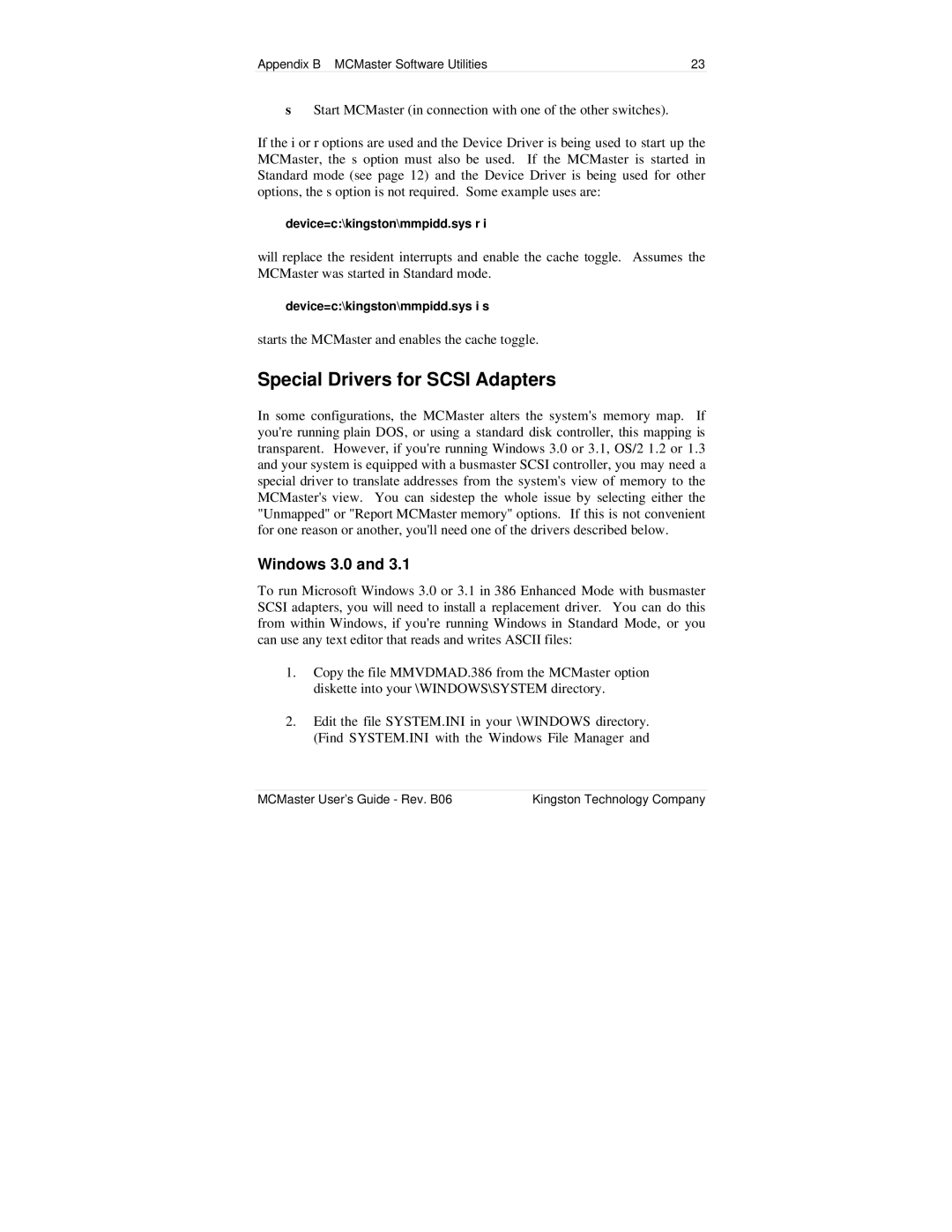Appendix B MCMaster Software Utilities | 23 |
sStart MCMaster (in connection with one of the other switches).
If the i or r options are used and the Device Driver is being used to start up the MCMaster, the s option must also be used. If the MCMaster is started in Standard mode (see page 12) and the Device Driver is being used for other options, the s option is not required. Some example uses are:
device=c:\kingston\mmpidd.sys r i
will replace the resident interrupts and enable the cache toggle. Assumes the MCMaster was started in Standard mode.
device=c:\kingston\mmpidd.sys i s
starts the MCMaster and enables the cache toggle.
Special Drivers for SCSI Adapters
In some configurations, the MCMaster alters the system's memory map. If you're running plain DOS, or using a standard disk controller, this mapping is transparent. However, if you're running Windows 3.0 or 3.1, OS/2 1.2 or 1.3 and your system is equipped with a busmaster SCSI controller, you may need a special driver to translate addresses from the system's view of memory to the MCMaster's view. You can sidestep the whole issue by selecting either the "Unmapped" or "Report MCMaster memory" options. If this is not convenient for one reason or another, you'll need one of the drivers described below.
Windows 3.0 and 3.1
To run Microsoft Windows 3.0 or 3.1 in 386 Enhanced Mode with busmaster SCSI adapters, you will need to install a replacement driver. You can do this from within Windows, if you're running Windows in Standard Mode, or you can use any text editor that reads and writes ASCII files:
1.Copy the file MMVDMAD.386 from the MCMaster option diskette into your \WINDOWS\SYSTEM directory.
2.Edit the file SYSTEM.INI in your \WINDOWS directory. (Find SYSTEM.INI with the Windows File Manager and
MCMaster User’s Guide - Rev. B06 | Kingston Technology Company |
